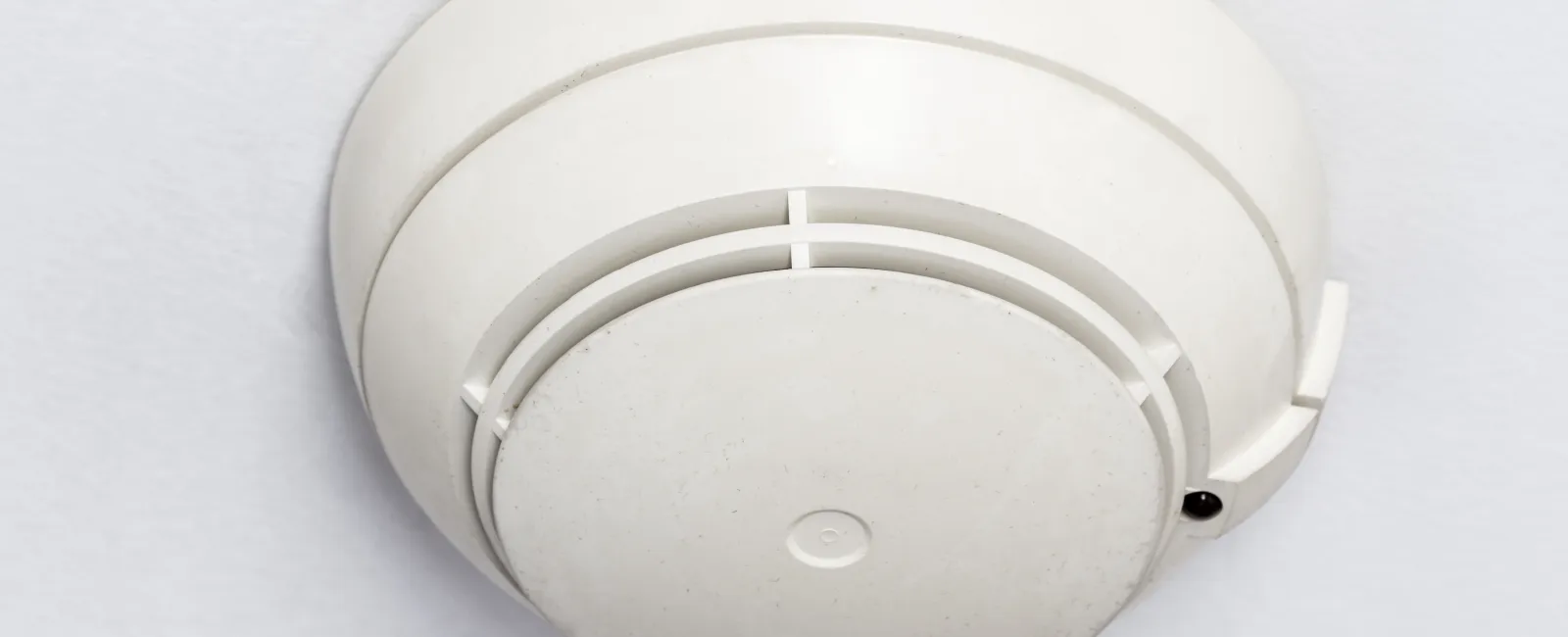Proper smoke detector placement is essential to your home's safety.
How much thought have you given to the number of smoke detectors in your home? What about the location of those detectors?
Most people know to install a smoke detector near the kitchen due to the possibility of cooking fires, but that's where the planning ends. They're often placed in spots deemed convenient rather than functional, but smoke detector placement isn't something you should blow off.
You and your loved ones are 55% less likely to lose a life during a home fire if you have operational fire alarms installed. When those alarms are thoughtfully placed and then well maintained to ensure optimal functionality, you can have peace of mind that you're safe and protected.
At Ackerman Security, we're committed to keeping Atlanta homes safe from fires. So, to help you determine the best placement for your smoke detectors, let's review:
- Which rooms to place your smoke detectors
- Installation best practices to follow
- Smoke detector maintenance
- The benefits of 24/7 fire monitoring
Ackerman Security is Atlanta's most trusted security company for a reason: We safeguard all aspects of your home, including fires! With our 24/7 monitoring services, we'll keep a trained eye on your home and property to prevent burglaries, home invasions, and fire emergencies. Call us today at (888) 552-1111 to discuss arming your home or business with live monitoring services. You can also get a free instant quote through our website.
Which Rooms to Place Your Smoke Detectors
Make sure you have operational detectors on each level of your home, along with the following areas:
Bedroom and Sleeping Areas
It takes you longer to detect the smell of smoke or hear signs of trouble while you're sleeping. Odors and odd noises may catch your attention immediately when you're alert and moving around your home. During sleeping hours, you're far less alert and may sleep through much of the time you need to escape the home.
For maximum protection, place one smoke detector within each bedroom and in a common area of every home zone that has a bedroom. For example, if all bedrooms in your home come off a long hallway, you should place a detector in the hallway and inside each bedroom. If you have bedrooms on multiple levels of the house, place detectors on each level near and within the bedrooms.
These placement guidelines allow you to protect against fires that may start inside or outside a bedroom. If it begins inside one bedroom, the detector in the common area should warn anyone sleeping in nearby bedrooms.
Kitchen
From 2014 to 2018, 49% of all reported home fires started in the kitchen. Those fires accounted for more than 20% of civilian deaths and 40% of injuries resulting from a home fire. The more you cook and utilize appliances that heat up, the higher your risk for experiencing one of those fires even when you aren't home.
You should install at least one smoke detector in your kitchen. Larger kitchens may require multiple detectors for proper coverage. Mount your detectors high on the wall, at least 10 feet away from the stove and other appliances used for cooking. That distance is required to eliminate false alarms when you're cooking.
Basement
It may seem like you don't need smoke detectors in your basement if you don't cook or use appliances there, but that's exactly why you need them. Most basements contain HVAC systems, clothes dryers, and other electrical elements that can potentially catch fire. The less time you spend in the basement, the less likely you will notice the smell of smoke or hear pops associated with fire ignition. You're likely to only detect the fire when the smoke reaches the upper levels of your home.
The best placement for basement smoke detectors is at the foot of the stairs leading up to other levels of the home. You should place additional detectors in each room of the basement or on each end of the basement, depending on your layout. Mount the detectors up high on the wall since smoke rises.
Installation Best Practices to Follow
- Install additional smoke detectors near living rooms, dining rooms, and other areas removed from the bedrooms. You want adequate coverage throughout your home, including areas that aren't occupied much of the time.
- Mount smoke detectors at the top or bottom of stairways, providing coverage for smoke moving from one level to another.
- For ceilings that come to a point, mount detectors about four inches below the peak. You don't want it in the point of the ceiling, but it should get close.
- Place all alarms 12 inches or less from the ceiling. Smoke rises, so you will need to get up high, even for vaulted ceilings.
- Accept that smoke detectors may not blend into your room décor beautifully. Trying to decorate or camouflage them could impact their functionality. Mount them as they come out of the box, according to manufacturer instructions.
Smoke Detector Maintenance
Every smoke detector comes with manufacturer instructions for proper maintenance. It's important to read that information and follow all required steps to keep your detectors in good working order.
Basic steps for smoke detector maintenance include:
- Pressing the button to test each detector at least once a month. You can mark this on a calendar or do it on the first or last day of every month to make it easy to remember.
- If you hear a chirp and replaceable batteries power your detector, be sure to keep spare batteries handy. For non-replaceable batteries, you can expect to replace each detector about every 10 years.
- Cleaning each detector according to instructions in the box.
If you have interconnected smoke alarms or special features, you may have additional maintenance steps to complete.
The Benefits of 24/7 Monitoring
If you have the right number of smoke detectors appropriately placed throughout your home, why would you consider 24/7 home monitoring? It may seem like you only need one or the other, but there are things a live responder can do during an emergency that a smoke detector cannot.
For example, a live responder can make sure the fire department is alerted at the same time as the police. This way, you're guaranteed the fastest response times possible.
Additionally, 24/7 live monitoring can alert you to carbon monoxide leaks. Known as "the silent killer," this lethal gas is odorless, which means you won't know there's a leak until it's too late.
Ackerman even offers add-on monitoring services for water damage and medical emergencies. That way, your entire home is protected, no matter what kind of disaster strikes!
Want Round-the-Clock Fire Monitoring from Trusted Professionals?
Contact Ackerman Security for 24/7 live monitoring services. We'll safeguard your home against break-ins, theft, fires, and carbon monoxide poisoning. We've been in business for more than 50 years because we value our customers' experience. Speak with one of our friendly, knowledgeable security pros today: (800) 552-1111. We'll keep your home and loved ones safe, day or night!
Rather get a free instant quote online? Head to our website for upfront pricing on 24/7 live monitoring within seconds.






